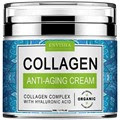tips to charge your phone quickly in a shorter time
The battery is considered one of the most important features of a smartphone, and it controls the number of hours it operates. If the battery is weak or slow to charge, this may bother you a lot while using the phone. In my personal opinion, the battery is the backbone and foundation of the phone, no matter how important the processor and memory are. Random access and the operating system will not be as important as the battery, because a weak battery will be a much greater obstacle when using the phone. If your phone comes with a weak battery, you will not be able to work on it for a long time, and it may run out of power at important times, and perhaps You do not have a portable charger (power bank), especially if your phone does not support the fast charging feature. It will take a long time to fully charge, so today we will provide you with 5 simple tips to charge your smartphone in a shorter time.
Tips to charge your phone quickly in a shorter time
1. Turn off the phone while charging
This is the first tip to charge the phone faster. With the phone turned off, all networks will stop working, and all applications will stop, in addition to the screen and speakers. With the phone completely turned off, the phone will charge quickly, and you will notice the big difference in the time it takes for the phone to charge. Charging when it is turned off is longer than the time it takes while charging it when it is turned on.
Tips to charge your phone quickly in a shorter time
2. Use Airplane Mode
If you cannot turn off the phone completely while charging, you can at least activate Airplane mode only. Airplane mode will stop connecting to wireless Internet networks (Wi-Fi) and stop working with mobile networks, which prevents you from sending and receiving calls and text messages, but you will be able to browse the phone. Only, which helps the phone focus on charging better than its connection.
Tips to charge your phone quickly in a shorter time
3. Do not browse the phone while charging
If you want to finish charging your phone quickly, of course, you must stop using it and browsing various applications or using the Internet, as all of this will exhaust the phone’s energy that enters it during charging, which will make it very late until it reaches 100% of the full power in the battery. You should also If you keep the screen off for a longer period of time to monitor the charging progress, this affects the charging speed a lot
Tips to charge your phone quickly in a shorter time
4. Maintain phone temperature
It is known that heat is the biggest enemy of electronics. If you want to charge your phone faster, you must first stay away from any sources of heat that may affect the temperature of your phone, such as leaving the phone inside its protective cover (case) or placing it in a place. So that the sun's rays reach it, or place it on a heavy fabric that increases its temperature.



















